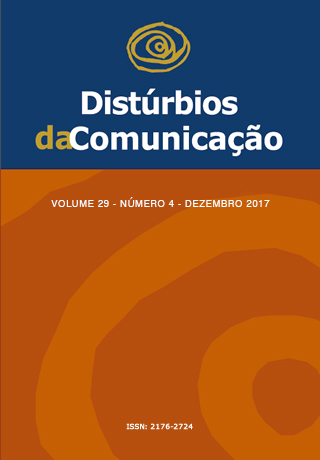Temporal resolution in children: analysis of different tests
DOI:
https://doi.org/10.23925/2176-2724.2017v29i4p727-733Keywords:
Child, Auditory Perception, Auditory Tests, Hearing, Understanding.Abstract
Introduction: Understanding how acoustic stimuli are processed along the auditory pathway is fundamental to understand the processes that underline human communication. The time variable influences the speech comprehension, for it is related to the auditory ability of temporal resolution. The minimum time observed in sound change is known as the temporal resolution threshold, and there are two tests available for clinical use: Random Gap Detection Test (RGDT) and Gaps-in-Noise (GIN). Objective: To verify the performance of normal hearing children, without auditory processing complaint in the RGDT and GIN tests and to suggest one of them to evaluate this population. Method: A total of 33 children without complaints of auditory processing disorder, 17 of the female sex and 16 of the male sex, with age between seven and ten years and 11 months, and auditory thresholds within normality bilaterally participated in the study. All were submitted to the basic audiological evaluation to verify the peripheral hearing, RGDT and GIN. Results: For the GIN test, the mean value of gaps detection in children was 4.8 ms, whereas for RGDT it was 11.67 ms. Conclusion: The GIN demonstrated to be easier to apply to schoolchildren, while RGDT greater difficulty in the understanding of tasks by students, but it can detect more possible changes in temporal resolution ability in the evaluated population. Therefore, we suggested that the RGDT test be used in students in the age group of this study, when they are able to understand the task requested by the testDownloads
Downloads
Published
Issue
Section
License
Copyright (c) 2017 Quemile Pribs Martins, Fernanda Freitas Vellozo, Vivian Amaral Faccin, Michele Vargas Garcia

This work is licensed under a Creative Commons Attribution 4.0 International License.









